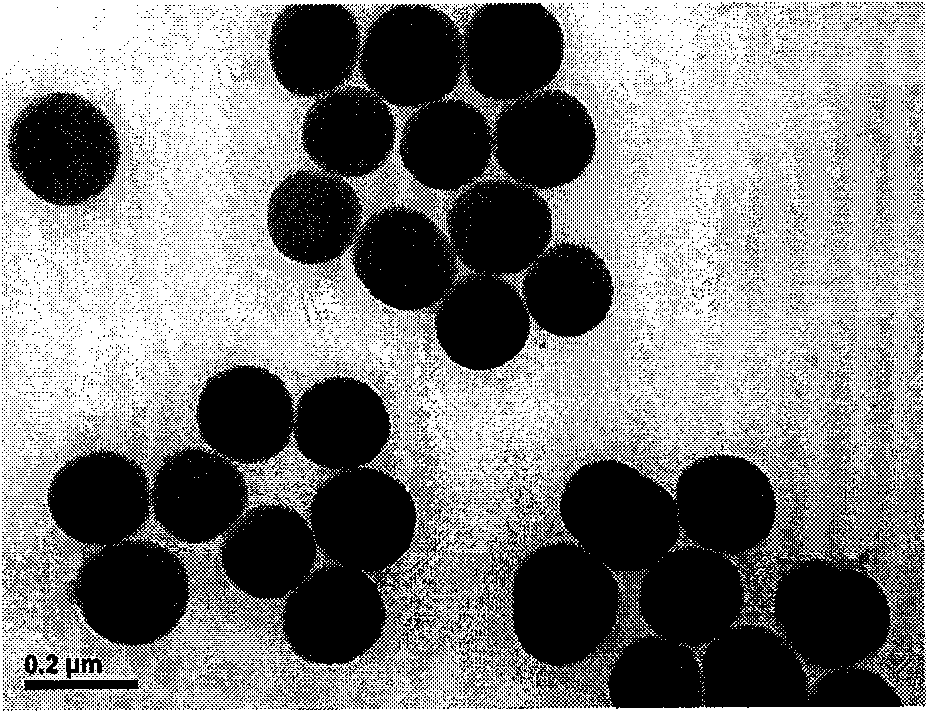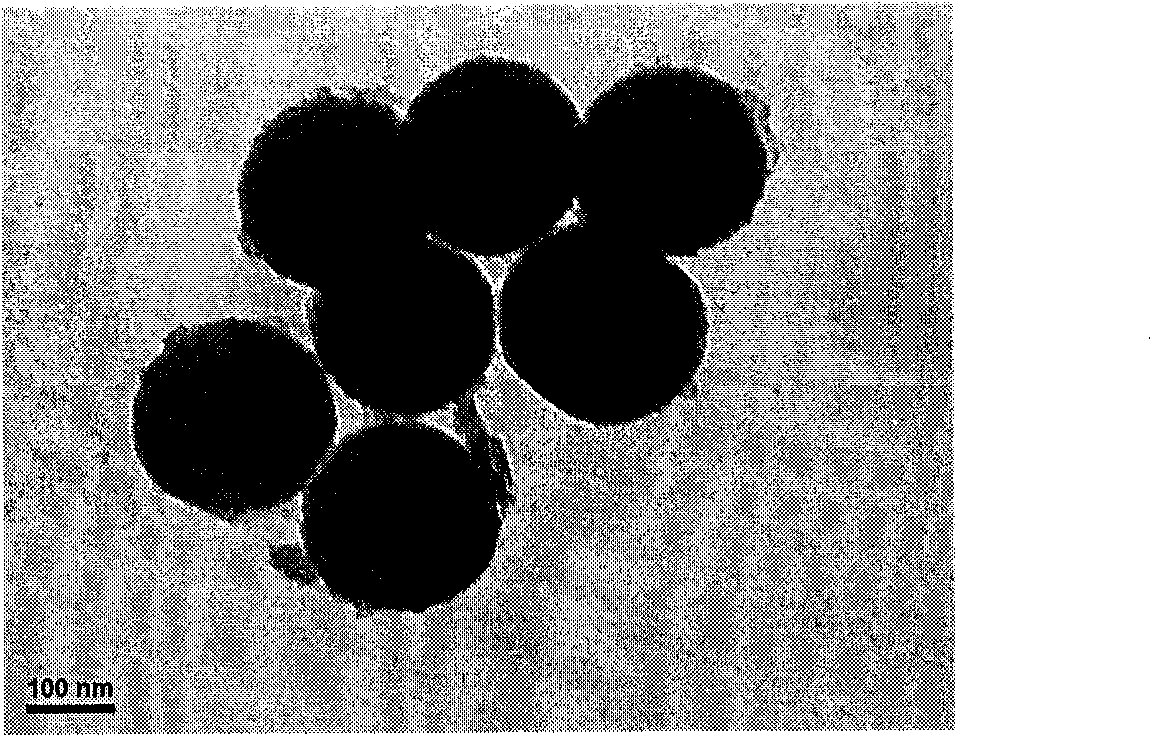Fluorescent conjugated polymer silicon oxide nanoparticle preparation method and application thereof
A technology of conjugated polymers and nanoparticles, applied in the field of chemical sensing materials, can solve problems such as threats to national security, and achieve the effects of increasing specific surface area, improving detection sensitivity, and high-sensitivity detection
- Summary
- Abstract
- Description
- Claims
- Application Information
AI Technical Summary
Problems solved by technology
Method used
Image
Examples
Embodiment 1
[0035] Embodiment 1, preparation of polyphenylene acetylene oxide silica nanoparticles
[0036]1) Dissolve 50mg of 4-iodo-N-(3-trimethoxysilylpropyl)benzamide in 5mL of tetrahydrofuran, slowly add dropwise to 10mL of anhydrous toluene dispersed with 200mg of silicon oxide nanoparticles, and Reflux at 110°C for 20 hours in the atmosphere. The reaction solution was centrifuged at high speed, and the resulting precipitate was washed with anhydrous toluene, tetrahydrofuran, and N,N-dimethylformamide in sequence, and finally dispersed into 12 mL of N,N-dimethylformamide for later use.
[0037] 2) Mix 6 mL of the N,N-dimethylformamide dispersion of the modified silica nanoparticles prepared in 1), 0.2 mmol of diethynylbenzene, 0.2 mmol of 2,5-diiodo-1,4 - Bis(3-sulfopropyl) benzene, 1 mg cuprous iodide, 4 mg bis(triphenylphosphine) palladium dichloride were added to the reactor under the protection of argon, and then 30 mL of deoxygenated N, N -Dimethylformamide, 20 mL of triethyl...
Embodiment 2
[0038] Embodiment 2, preparation of polyphenylene acetylene oxide silica nanoparticles
[0039] 1) Dissolve 200mg of 4-iodo-N-(3-trimethoxysilylpropyl)benzamide in 15mL of tetrahydrofuran, and slowly add dropwise to 100mL of anhydrous toluene dispersed with 200mg of silicon oxide nanoparticles. Reflux at 110°C for 20 hours in the atmosphere. The reaction solution was centrifuged at high speed, and the resulting precipitate was washed with anhydrous toluene, tetrahydrofuran, and N,N-dimethylformamide in sequence, and finally dispersed into 12 mL of N,N-dimethylformamide for later use.
[0040] 2) Mix 6mL of N,N-dimethylformamide dispersion of modified silica nanoparticles prepared in 1), 15mmol of diethynylbenzene, 15mmol of 2,5-diiodo-1,4-di (3-sulfopropyl)benzene, 15mg cuprous iodide, 150mg bis(triphenylphosphine)palladium dichloride were added to the reactor under the protection of argon, and then 70mL N, N-dimethyl Dimethyl formamide, 50 mL of triethylamine and 60 mL of w...
Embodiment 3
[0041] Embodiment 3, the preparation of polyphenylene acetylene oxide silica nanoparticles
[0042] 1) Dissolve 83mg of 4-iodo-N-(3-trimethoxysilylpropyl)benzamide in 5mL of tetrahydrofuran, and slowly add dropwise to 10mL of anhydrous toluene dispersed with 200mg of silicon oxide nanoparticles. Reflux at 110°C for 20 hours in the atmosphere. The reaction solution was centrifuged at high speed, and the resulting precipitate was washed with anhydrous toluene, tetrahydrofuran, and N,N-dimethylformamide in sequence, and finally dispersed into 12 mL of N,N-dimethylformamide for later use.
[0043] 2) Mix 6 mL of the N,N-dimethylformamide dispersion of the modified silica nanoparticles prepared in 1), 0.2 mmol of diethynylbenzene, 0.2 mmol of 2,5-diiodo-1,4 -Bis (3-sulfopropyl) benzene, 4.5 mg cuprous iodide, 11.2 mg bis (triphenylphosphine) palladium dichloride was added to the reactor under the protection of argon, and then 50 mL of deoxygenated N , N-dimethylformamide, 30mL tr...
PUM
 Login to View More
Login to View More Abstract
Description
Claims
Application Information
 Login to View More
Login to View More - R&D
- Intellectual Property
- Life Sciences
- Materials
- Tech Scout
- Unparalleled Data Quality
- Higher Quality Content
- 60% Fewer Hallucinations
Browse by: Latest US Patents, China's latest patents, Technical Efficacy Thesaurus, Application Domain, Technology Topic, Popular Technical Reports.
© 2025 PatSnap. All rights reserved.Legal|Privacy policy|Modern Slavery Act Transparency Statement|Sitemap|About US| Contact US: help@patsnap.com



